We may not have the course you’re looking for. If you enquire or give us a call on +1 6474932992 and speak to our training experts, we may still be able to help with your training requirements.
We ensure quality, budget-alignment, and timely delivery by our expert instructors.
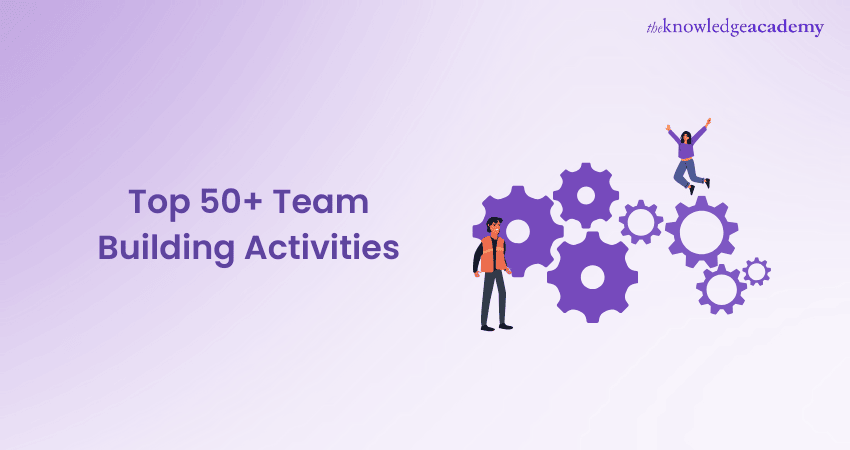
Collaboration is the fuel that drives growth in any organisation. But is there a sure-fire way to ensure this fuel isn't depleted? The answer lies in the power of Team Building Activities. Moreover, thanks to innovations in communication technology and workplace models, team building has evolved beyond office walls, offering endless creative ways to ignite (and reignite) connection and collaboration.
Whether you are working remotely, on-site, or balancing the best of both worlds by embracing the Hybrid model, this blog is your roadmap to fostering a highly collaborative workforce. From virtual escape rooms and virtual karaoke to hybrid office Olympics and online gaming, explore 50+ exciting Team Building Activities and unleash the full potential of your team! Read on!
Table of Contents
1) What are Team Building Activities?
2) What is the Main Purpose of a Team Building Activity?
3) Importance of Team Building Activities
4) Top 50+ Team Building Activities
5) What are the Five P's of Team Building?
6) What are the Four Steps of Effective Team Building?
7) Conclusion
What are Team Building Activities?
Team Building Activities are a collection of exercises, games, and tasks designed to bring individuals together, developing a sense of friendship and collaboration among team members. These activities play a crucial role in improving communication, building trust, and strengthening interpersonal relationships within a group.
Such activities help develop a cohesive, positive, and motivated work environment, enabling the team to work together to achieve common objectives. These activities can vary widely in nature and complexity, catering to different team dynamics and objectives. They can range from simple ice-breakers and energisers to more complex problem-solving challenges and outdoor adventures. The choice of activities depends on the specific needs and goals of the team.

What is the Main Purpose of a Team Building Activity?
The primary purpose of any Team Building Activity is to improve some aspects of teamwork while bringing everyone together in a shared experience. This might include team values, motivation, working on communication, collaboration, alignment, and anything else enabling a group to work together more effectively.
It also includes resolving conflicts, sharing skills, or simply bringing your group together in a shared experience. Any team-building effort must be designed to help bring team members closer and to encourage them to move towards your shared goals. However, it's crucial to also consider the potential Disadvantages of Team Building Activities, such as cost or the possibility of creating further divisions within the team. In the next section, we explore the various benefits of team building.
Importance of Team Building Activities
The Importance of Team Building in today's corporate landscape cannot be overstated. Team building is vital in creating a positive and productive work environment, fostering strong relationships among team members, and maximising overall team effectiveness. The reasons detailed below explain why Team Building Activities are crucial:
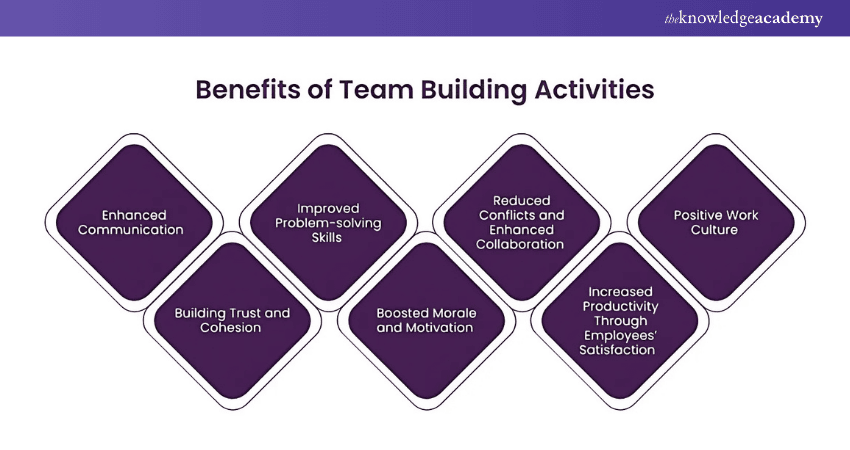
1) Enhanced Communication: The success of any team depends on how well it communicates, with activities like Team Building Questions acting as catalysts to enable team members to interact with one another and contribute towards the team's common targets.
2) Building Trust and Cohesion: Through Team Building Activities, teams develop cohesion, and personal and professional trust develops among members.
3) Improved Problem-solving Skills: Team building often involves problem-solving challenges that require a collective effort. Engaging in such activities enhances the team's ability to think creatively to find solutions.
4) Boosted Morale and Motivation: Team Building Activities create a sense of brotherhood and belonging among team members. When employees feel appreciated and valued within their team, their job satisfaction and morale increase.
5) Reduced Conflicts and Enhanced Collaboration: By fostering better understanding and empathy among team members, team building activities mitigate conflicts and help team members resolve issues collaboratively.
6) Increased Productivity Through Employees’ Satisfaction: Productivity naturally improves when team members work together harmoniously and efficiently.
7) Positive Work Culture: Team Building creates a positive and inclusive work culture where employees feel appreciated and valued. Additionally, Team Building Activities that prioritise wellness and stress relief contribute to employee well-being.
Unleash your leadership potential with our comprehensive Management Courses - drive success, inspire your team, and transform your career.
Top 50+ Team Building Activities
Team Building Activities start with ice-breaker activities which are the starting point for building a team. These activities help team members become more comfortable with each other, break down initial barriers, and create a relaxed atmosphere.
Common examples of Team Building Activities are discussed below:
Team Bonding Activities
Initiating Team Building Activities can be deemed quite challenging, especially in scenarios where a new team is involved. The various activities specified below are designed to help the team members understand one another more effectively. Moreso forming deeper and trustworthy bonds as a team.
Now even if the team members have known one another, these activities can help enhance their bonds, thereby improving their cohesiveness and overall well-being. Such activities typically boost engagement amongst employees and the work culture of the company.
The following activities can be conducted to foster conversation and encourage employees to break the ice with one another, especially with remote workers:
a) The ‘3 Question Mingle’: The most preferred starting point for building a new team is usually conversation. Now even though effective team building often begins with conversations, the lack of a clear framework can impede the group’s progress. The 3 Question Mingle offers a solution, wherein each team member formulates three questions on sticky notes and engages in a one-minute meeting with a colleague.
During this brief interaction, they ask one question and exchange sticky notes. Encourage the team to circulate in pairs throughout the room, posing questions and swapping notes. This team-building exercise not only facilitates mutual acquaintance within the team but also empowers individuals to inquire about topics important to them. By combining a structured approach with individual initiative, you set the stage for a successful team-building workshop. Consider enhancing the experience by incorporating these sticky notes into a memory wall for future reflection!
Enhance your problem-solving skills with our Problem Solving Training - join now!
b) ‘9 Dimensions’ Team Building Activity: In the ‘9 Dimensions’ Team building Activity, you can distribute the red, green, yellow, and blue dots to each team member alongside the nine dimensions under consideration. Further, participants place a dot on each dimension to indicate whether they feel they are excelling or need improvement.
c) Awareness Circle: While establishing connections among group members may come naturally to extroverted individuals, introverts might encounter challenges in forming strong bonds with their team and fostering meaningful connections. In the ‘Awareness Circle’ exercise, the goal is to prompt the group to familiarise themselves with one another without verbal communication, highlighting that every team member possesses a link within the team.
d) Best and Worst: The efficacy of team-building exercises often increases when you leverage the individual interests and passions of each team member, prompting them to open up and share personal aspects with the team. In the ‘Best and Worst’ activity, participants are asked to pose questions related to their best and worst experiences or insights, seeking to learn from the group. Questions such as "Can you share the best recipe you know?" or "Please tell us about the worst injury you've ever had" are suggested. After gathering all the questions and pairing participants randomly, the group is encouraged to share their responses and the accompanying stories.
e) Break the Ice with ‘The Four Quadrants Activity’: This activity can be initiated by distributing paper sheets and instructing each participant to create a 2×2 grid, posing four questions to the group. Each team member illustrates their response in one of the grid squares, and after the designated time, the group is encouraged to share.
f) Group Order: Facilitating the introduction phase at the beginning of a meeting or with a new team can be straightforward. Just prompt participants to organise themselves based on their knowledge about one another and encourage them to discover new information. The ‘Group Order’ exercise involves assembling the group and instructing them to arrange themselves according to specific criteria, such as the distance from home to the workplace, birthdate, or the number of countries visited. You'll find it surprisingly effective in fostering communication and collaboration as everyone works toward a shared objective.
g) Happiness Exercise: When introducing a new team, adopting the ‘Happiness Exercise’ prompts the exchange of uplifting stories and experiences facilitating connection and cultivating a positive environment in the group. This team building activity can also be applied in a workplace setting or with a team that is already well-established.
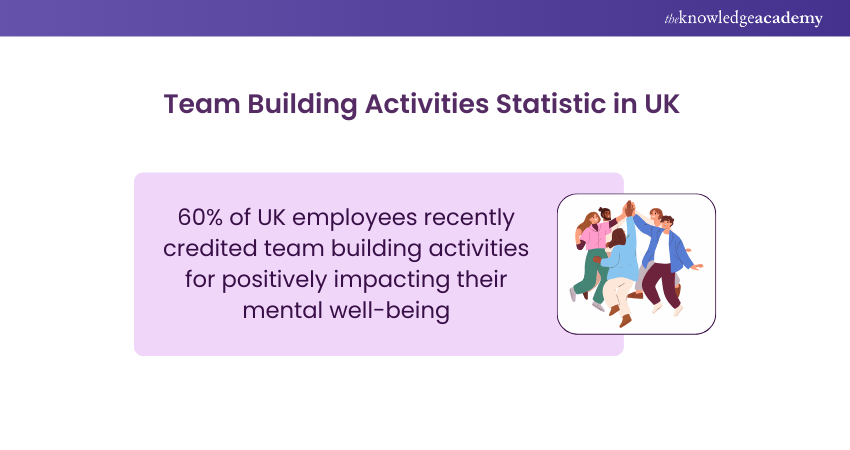
h) Just One Lie: With new teams or groups unaccustomed to team building, simplicity using a proven method can be most effective. "Just One Lie" is a variation of the popular "Two Truths and a Lie" game, but it encourages participants to interact and share numerous facts about themselves.
i) Life Map: Effective Team Building catalyses the process of forming stronger teams and provides opportunities for reflection and more profound sharing among participants. Next, utilise the ‘Life Map’ activity to prompt your group to illustrate or craft a collage representing their life stories, which they can subsequently share with the team.
j) Name Juggling: Collaborating with unfamiliar teams involves familiarising oneself with new names. You can inject excitement and energy into team building beyond the usual formalities with this interactive icebreaker game. Gather the team in a circle and have each individual introduce themselves by name.
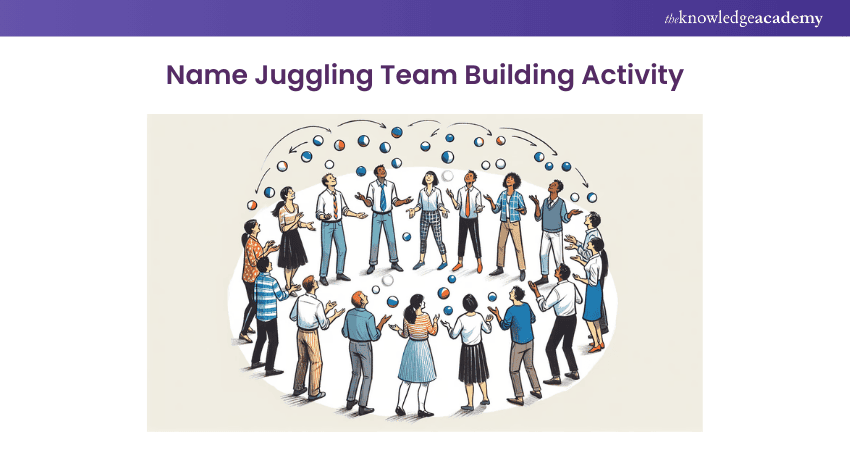
Then introduce a ball into the mix, and the participants should mention another person's name before tossing the ball to them. Upon receiving the ball, the named person expresses gratitude and then passes it to someone else, continuing the cycle.
k) Open Fist: Discovering shared interests among team members is a fundamental aspect of fostering successful teamwork and communication. While certain Team Building Activities and conversation games may require a more detailed approach, Open Fist offers a straightforward yet impactful bonding exercise. By sharing lesser-known facts about themselves, teams can enhance their cohesiveness.
Begin your leadership journey now! Our Introduction to Management Course provides the foundations to guide, inspire, and excel.
Funny Team Building Activities
a) Bang: A great recommendation is to rejuvenate your team and encourage them to have fun by participating in the Team Building Activity called ‘Bang’. This is a simple game which pushes team members to give reactions in a rapid fashion.
The activity can be initiated by electing a new Sheriff and making the remaining group members form a circle around the Sheriff. The sheriff then spins around, points at any member in the circle and shouts ‘Bang!’. The person being pointed at needs to crouch as quickly as possible. This is followed by two more people on either side of the said person crouching down, pointing immediately at one another and shouting the person’s name out aloud.
b) Build-a-shake: Handshakes are a bonding element that have existed amongst individuals since they were kids, where there would be a ‘secret handshake’ created amongst kids to display connection and friendship. A very similar Team Building Activity could be created, wherein the team would tap into the same sense of creativity and encourage their fellow members to know one another while sharing and developing their handshakes in pairs.
c) Count Up: Groups that are devoting time and effort to fostering trust and interpersonal relationships can get involved in basic activities that require focus, awareness and cohesion. In the ‘Count Up’ activity, the team is required to gather and count until twenty while closing their eyes, sans any communication. Now any member can say only one number at a time, and if two members speak simultaneously, the team must start the activity again.
d) Follow the Leader: When engaging in virtual team building, opting for uncomplicated activities proves to be an effective approach to encourage participation and alleviate frustration. ‘Follow the Leader’ stands out as an excellent team-building energiser activity that is applicable to both online and offline teams. In the virtual context, a team can activate Zoom's gallery view and prompt participants to execute actions within the frame of their screens, which others must replicate. Embracing a bit of light-heartedness is encouraged, and this team-building exercise frequently leads to bouts of laughter and increased energy levels!
e) Portrait Gallery: Engaging in imaginative team-building exercises proves effective in fostering camaraderie and energising a team through playful activities. In the Portrait Gallery activity, you and your team will work together to create portraits of each member in the group, resulting in a lively and entertaining collection of portraits.
To begin the ‘Portrait Gallery’ activity, divide the group into two teams. Team B will be responsible for sketching portraits of Team A, passing their drawings to the next person every 10-15 seconds for continuous collaboration. By the conclusion of this team-building game, you'll have a diverse set of portraits representing everyone in the group, while also significantly breaking the ice among team members.
f) Snowball: The ‘Snowball’ activity is an excellent choice for prompting individuals to leave their seats, move around, and also serve as an icebreaker. The activity can begin by posing a group-relevant question and instructing each participant to record their response on a piece of paper. Following this, encourage everyone to crumple their papers and gather in the central area of the room for a lively snowball fight!
After a brief period, instruct participants to retain one ‘snowball’ and locate the person who provided the written answer. This team building exercise not only injects vibrancy into the environment but also promotes interpersonal connections among participants.
g) Celebrity Party: You've probably played the game where you write the name of a random celebrity on a piece of paper, stick it to your forehead, and then ask questions to deduce the identity. While it is quite a straightforward activity, it is highly effective for breaking the ice and fostering laughter and conversation.
h) Non-verbal improv: Whether you're collaborating with teams in different locations or working together in the same place, it's essential to recognise the importance of enjoying your time together. We highly value uncomplicated games that also serve as tools to initiate discussions about enhancing our collaborative efforts. This improvisation activity is straightforward yet effective, providing a delightful way to foster team bonds and evoke smiles. Begin by jotting down various actions on post-it notes, like sipping a glass of water or enjoying pasta. Then, encourage participants to act out these actions without using words. Incorporate more challenging and amusing scenarios to engage the group, fostering humorous moments that contribute to team unity!
i) The Viking: This activity from Hyper Island encourages teams to unleash energetic and enthusiastic actions, channelling the spirit of Vikings, our beloved historical raiders.
Now, this activity can be seamlessly integrated into an extended workshop or meeting to inject energy into the group dynamics and establish a memorable experience with your team. For an added touch, consider having a group photographer document these lively moments, creating a visual history wall for later reflection!
Step into leadership with confidence! Our Management Training for New Managers equips you with the tools you need to succeed.
Corporate Team Building Activities
Below is a list of various corporate Team Building Activities that you can conduct:
a) Appreciations Exercise: The ‘Appreciations Exercise’ aims to facilitate the exchange of positive feedback within a group, allowing each member to receive appreciation for their strengths from others. Begin by arranging the group in a circle and instruct each participant to write their name on a piece of paper, passing it to the person on their left.
Each person then notes what they most value about the person named on the sheet before passing it along. You can conclude the activity by sharing these expressions of appreciation and collectively celebrating everyone in the group. Consider incorporating this exercise into a happy hour for an even more festive celebration of each other's strengths!
b) Cover Story: In this game, small groups collaborate to design a magazine cover featuring your team, incorporating headlines and taglines that depict the team's optimal version. By envisioning the ideal future state for the organisation, your group can identify actions to pursue today while simultaneously producing an enjoyable and practical artefact for the team.
c) Coat of Arms: In the Coat of Arms exercise, each team member starts by crafting a personal coat of arms and subsequently shares it with a partner. The partner then interprets the coat of arms and presents it to the entire group.
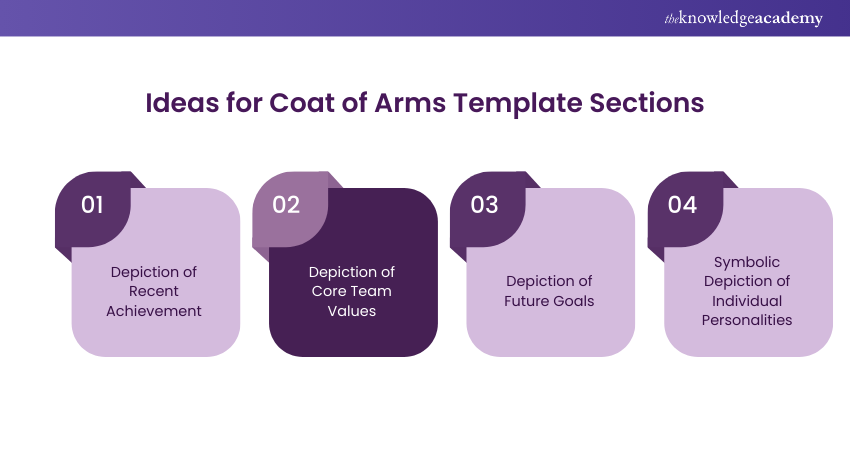
d) My Favourite Manager: Begin this activity by gathering your team to explore their preferences and dislikes when it comes to managers. This team building exercise within the corporate setting establishes a comfortable environment for discussing various Types of Management Styles and promotes understanding among team members.
e) The Pirate Ship Exercise: Examining team roles and responsibilities in a fun and casual manner proves to be an enjoyable activity for office events. In this uncomplicated yet impactful team-building exercise, present the picture of a pirate ship's crew. Then, encourage participants to contemplate which roles resonate most with them on the ship. Who assumes the role of the captain? Who keeps an eye out for land or takes care of the deck? By collectively reflecting on this entertaining scenario, you can foster meaningful discussions within your group.
f) History Map: Developing effective teams is frequently a journey involving brainstorming, introspection, and refinement over time. At times, it can be challenging to fully grasp the extent of a team or organisation's evolution. Through this corporate team-building activity, encourage your group to reminisce and enhance their collective experience by constructing a memory wall that captures significant moments over a specific timeframe. By promoting the development of a shared visual resource like the History Map, you also stimulate creativity and infuse a sense of enjoyment, offering an ideal conclusion to a project or working session.
g) Birds of a Feather: Teams often naturally develop sub-groups based on shared characteristics. This activity effectively demonstrates how intentionally creating more diverse groups can enhance team resilience and productivity. To begin, distribute index cards to each team member, each card bearing a single letter. Instruct participants to form a group of five people as swiftly as possible, providing no further guidance. Then, challenge the groups to create the longest word possible using their cards. It will become evident that the most successful approach involves forming a team with diverse cards. This straightforward game serves as an excellent precursor to broader discussions about diversity and inclusion. As always, debrief the learnings and encourage deeper conversations within the group to ensure the success of this activity.
h) Human Knot: Business meetings can be quite serious, but they don't have to be. In this enjoyable team-building activity, inspire your group to relax as they collaborate to solve a body-engaging puzzle! Begin by organising your team members into groups of 7-12 individuals. Instruct each group to form a circle, close their eyes, and interlink hands with two other people in the circle. Then, challenge each group to untangle the human knot they've created without breaking the chain. This is an entertaining game that demands clear communication, teamwork, and a touch of flexibility!
Transform your ability to lead and connect! Discover the essentials of People Management with our Introduction to Managing People Course .
Team Communication and Collaboration Activities
Below is a list of various corporate Team Building Activities that you can conduct:
a) Conflict Responses: It's crucial to bear in mind that each team comprises individuals, and occasional conflicts or differences of opinion may emerge. While it's common for disagreements to occur, our reactions to conflicts and how we address them are within our control and can be enhanced. In this activity, contemplate past conflicts as a team and collaboratively establish a set of guidelines for handling such situations in the future. Effectively resolving issues is a significant aspect of team collaboration, and involving all team members in this process can yield more meaningful results.
b) Heard, Seen, Respected: Team empathy is a crucial element of effective teamwork, but regardless of your organisation's size, understanding and appreciating others' perspectives can be challenging. "Heard, Seen, Respected" is a team-building exercise crafted to assist participants in honing deeper empathy for their colleagues and fostering the types of connections and work practices that enhance team collaboration. By encouraging participants to identify patterns in shared stories and discover common insights, you can align everyone on the same page and enhance communication skills.
c) Myers-Briggs Team Reflection: In the Myers-Briggs personality ,each team member reflects on their own personality type, followed by small group discussions. It's crucial to properly frame the use of the Myers-Briggs Type Indicator (MBTI), emphasising its utility in understanding communication preferences without pigeonholing team members based on self-reported preferences.
d) Strength Building Exercise: Team Building Exercises manifest in diverse forms, and this particular activity centres on the team supporting and boosting each other's confidence, self-esteem, and mutual trust. Commence by prompting team members to recount an instance where they achieved something personally gratifying. Subsequently, the rest of the team contributes by identifying two to three strengths that the individual likely demonstrated during that accomplishment. Collaborative teamwork involves aiding fellow team members in reaching their potential, and this exercise facilitates the group in meaningfully and efficiently uplifting one another.
e) Strength Envelopes: Every team comprises individuals with distinct strengths, capabilities, and work preferences. To enhance engagement and streamline group workflow, encourage each participant to leverage their unique strengths and engage in tasks that align with their interests when collaborating. In this team-building exercise, prompt participants to inscribe their name on an envelope.
f) Team of Two: Collaboration on a one-to-one basis shows that employees can find ways to work more effectively in pairs, regardless of the mode of communication. You can experiment with the ‘Team of Two’ activity which helps empower your team members with more effective communication skills.
g) What I Need From You (WINFY): The best Team Building Activities generally emphasise on helping the team members improve their interpersonal skills as a group. WINFY is a simple way of working with other groups to create and receive requests. People working in different disciplines can quickly improve how they ask each other for what they need to be successful.
Team Problem Solving Activities
Below are activities that teams can participate in to solve problems in a collective manner, regardless of the problem’s size. It all boils down to experimenting with approaches and maintaining consistency:
WINFY is a simple way of working with other groups to create and receive requests. People working in different disciplines can quickly improve how they ask each other for what they need to be successful.WINFY is a simple way of working with other groups to create and receive requests. People working in different disciplines can quickly improve how they ask each other for what they need to be successful.
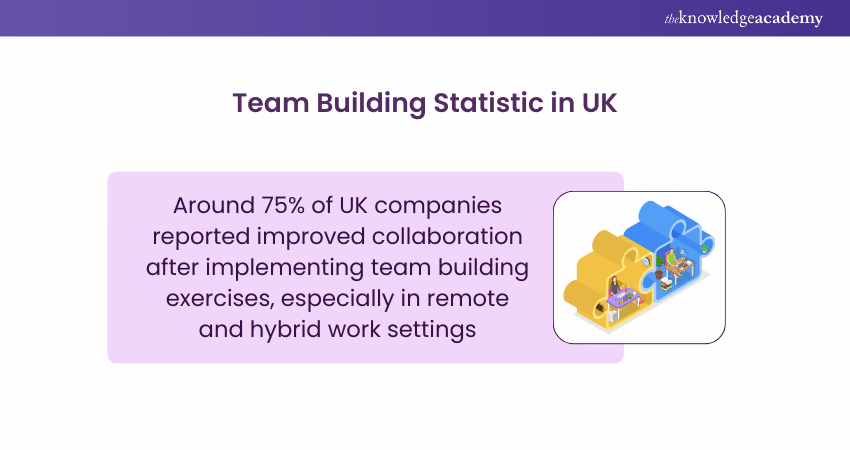
a) Blind Square – Rope Game: A team workshop gains vibrant energy from a seemingly uncomplicated challenge that actively involves everyone. In this interactive problem-solving activity, begin by transforming a length of rope into a circle and encourage participants to devise a strategy for turning it into a flawless square without being able to see. Following the planning phase, team members don blindfolds and have ten minutes to shape the rope into the square. Through a reflective discussion afterward, your team will discover the significance of communication, planning, and attention to detail in effective team problem-solving, all within an enjoyable context.
b) Crocodile River: We appreciate team-building exercises that push the group to collaborate in creative ways and inject energy into a workshop environment. Crocodile River is a team problem-solving activity that requires team members to physically assist each other in traversing a broad outdoor area. By altering the environment and prompting problem-solving and strategic thinking to overcome a challenge, your team not only enhances their problem-solving skills but also hones their communication, leadership, and cooperation. As with any more unconventional team-building game, it's crucial to conduct a thorough debrief afterward for optimal results!
c) Egg Drop: Time-tested Team Building Activities such as Egg Drop provide effective methods for promoting collaborative problem-solving and enhancing communication skills within teams.
This game frequently sparks laughter and stimulates creative thinking as participants brainstorm ways to protect a fragile egg.
In this team problem-solving exercise, task small groups with constructing a self-supporting structure capable of safely dropping an egg from a height of seven feet. Introduce additional constraints and challenges to increase difficulty and foster a higher level of teamwork.
d) Helium Stick: Uniting team members through problem-solving activities that incorporate an element of play can serve multiple purposes. Beyond fostering teamwork and the development of diverse team skills, these activities can also bring enjoyment and laughter to the group. The Helium Stick is an instance of a straightforward team-building game that serves a dual purpose by promoting enjoyable physical activity while introducing and delving into fundamental team-building concepts.
Challenge the group to lower a lengthy pole to the ground while ensuring that all their fingers maintain contact with the pole throughout, making the task more challenging than it initially seems!
e) Lego Challenge: The act of bringing your team members together often revolves around the goal of crafting something collectively. Dive into the interactive realms of co-creation and collaboration through this team-building game involving LEGO. Expanding upon the principles of LEGO Serious Play, this activity serves as an excellent means of promoting playfulness, unconventional thinking, and creative strategies for tackling ongoing challenges. Furthermore, each team member is entrusted with a covert task, heightening the difficulty level and prompting the discovery of innovative methods for efficient cooperation, ultimately achieving both individual and team objectives.
f) Marshmallow Challenge with Debriefing: In this activity, within a brief eighteen-minute timeframe, teams are tasked with constructing the tallest self-supporting structure using materials such as spaghetti, tape, string, and a single marshmallow placed at the pinnacle. This particular iteration of the team building exercise includes a debriefing segment aimed at prompting reflections on individual team members' roles.
g) Spider Web: Engaging in enjoyable and physical outdoor activities can effectively foster team bonding and break the monotony of a regular work schedule. This team-oriented problem-solving activity involves participants collaborating to create openings in a network of strings and ropes, enabling the entire group to pass through simultaneously in a safe and efficient manner. Team members must navigate the challenge without directly handling the string or rope. The inherent complexity of this task adds an intriguing dimension to the problem-solving experience, particularly in diverse groups.
h) Stress Balls: At one point or another, most teams will be asked to perform effectively under pressure, whether that’s generated by internal or external stressors. By using team building games that help participants work together and communicate effectively even under difficult circumstances you can prepare your team members for almost anything! Stress Balls is a fun game to help start exploring team resilience and problem solving under pressure, and it’s easy to run with large groups too! Start by simply passing a single ball around the room before adding more complex rules to help team members learn a valuable lesson about communication and teamwork!
i) Scavenger Hunt: Engaging in activities that promote teamwork and communication is an excellent way to foster team camaraderie. A traditional scavenger hunt provides a delightful opportunity to unite large groups and enjoy a unique experience together! Ensure that this enjoyable team-building activity incorporates office trivia, inside jokes, or elements of your company culture to make it more impactful. Customising the scavenger hunt according to your group's characteristics enhances its effectiveness. Additionally, consider incorporating activities that resonate with different departments or skillsets within the group to add an extra layer of engagement to the scavenger hunt!
Team Bonding and Trust Building Activities
Since mutual trust is a crucial aspect for a team bonding activity or teamwork during a project, employees and managers must ensure they learn how to foster it organically. The following activities are designed to bring the team together, thereby creating trustworthy relationships.
a) Trust Battery: The Trust Battery activity is crafted to enhance team cohesion by prompting each group member to assess and replenish their trust levels. Through meaningful reflection, this activity aims to foster improved collaboration and a greater sense of unity within the team.
b) Sharing Stories: In the activity "Telling Our Stories", participants are encouraged to contemplate their childhood, young adulthood, and present experiences while responding to questions on coloured post-it notes.
c) Better Connections: In the activity "Telling Our Stories", participants are encouraged to contemplate their childhood, young adulthood, and present experiences while responding to questions on coloured post-it notes.
d) Translated Rant: The primary objective of this entertaining team building exercise is to foster honesty and simultaneously enhance communication skills. Divide the team into pairs and designate one person to passionately express a pet peeve for 60 seconds. Subsequently, instruct the other person to translate the rant by emphasising the underlying concerns and genuine sentiments.
Team Building Activities for Remote Teams
Team Building Activities are not just for office staff. Whether your team operates a hybrid model or is fully remote, involving everyone in Team Building Activities is crucial for building team morale. Consider these virtual team building games that can be played by staff working remotely:
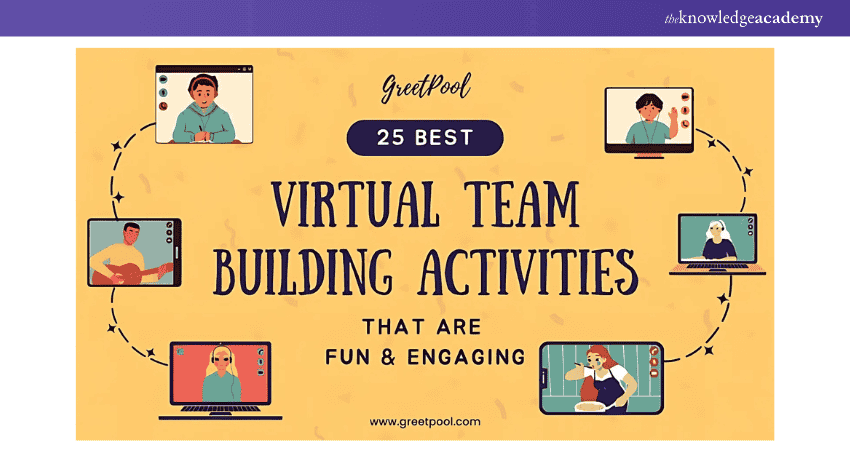
a) Whose Office Is It, Anyway?: You'll need a file-sharing tool. In this activity, have your team members send photos of their home offices and then have everyone guess whose workspace these are. Keep the game going with photos of everyone's desktop backgrounds, coffee mugs, or the view outside their window.
b) Online Multiplayer Games: Pick a game that will enable your team to strategise and problem-solve, such as Travian, or browse the many free and paid co-op games on Steam. You can chat using your computer's built-in microphone and headsets or speakers.
c) Online Karaoke Party: Nothing lets one loose like a karaoke party! Use your computers' built-in speakers and microphones to challenge teammates to a karaoke battle. You can compare high scores, or simply have fun showing off your singing skills.
d) Virtual Escape Room: Engage the team in virtual escape room challenges, where the team must collaborate to solve riddles and puzzles to escape the virtual room. Many different virtual escape room platforms are available online, such as Escapely, which deliver diverse themes and difficulty levels. With so many options, you should be able to keep virtual escape rooms in your team building activity roster without it feeling repetitive.
e) Remote Book Club: For this one, you'll need an e-books or physical book and a video conferencing app. Pick a book everyone on the team can read and discuss during virtual meetings.
This will encourage the introverted team members to participate, as they can interconnect on a shared interest instead of engaging in mindless small talk. While remote book clubs are ideal for small groups, they can work with well-organised larger groups as well.
Team Building Activities for Hybrid Teams
Team Building Activities for hybrid teams should be inclusive, engaging, and accessible to remote and in-person team members. Here are some activities that can bridge any gap between remote and on-site employees and nurture strong working relationships:
a) Hybrid Idea Jam: You'll need a video conferencing platform and a shared digital whiteboard for this activity. Divide team members into smaller groups and collaborate on ideas through a shared digital whiteboard. After a set time, each group must present their ideas to the whole team, and the best ideas are voted on.
b) Picture Scavenger Hunt: Divide the team into small groups and develop a list of picture prompts. Teams then work together to find or recreate every prompt and share their pictures in the messaging app and the first team to complete the list wins.
c) Hybrid Pictionary: Once your team is divided into two groups, task one member with drawing on the digital whiteboard while the rest guess the phrase being drawn. Keep track of the score, and the group with the most points wins.
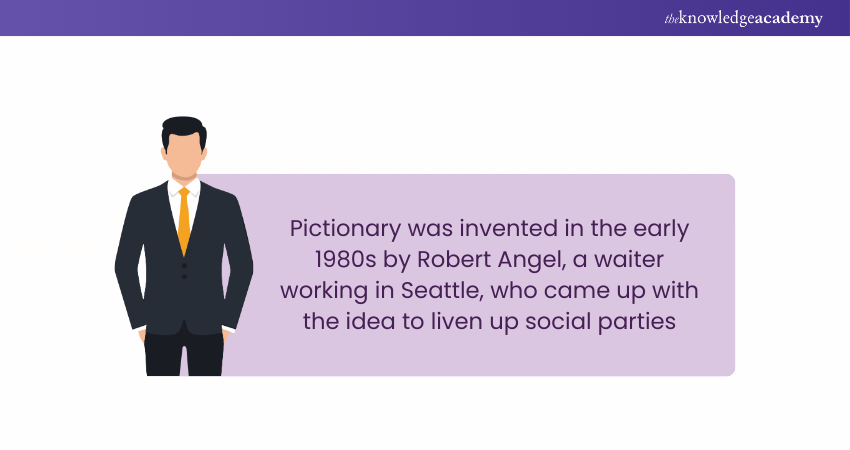
d) Hybrid Office Olympics: Organise a series of challenges that can be completed remotely or in-person. Participants can compete individually or as teams, with scores recorded on a shared leaderboard. Celebrate the winners with a virtual awards ceremony.
e) World tour presentations: Assign each team member a country and research it, creating a short presentation highlighting landmarks, facts, and customs. Schedule a virtual meeting to share the presentations and learn about diverse cultures.
What are the Five P's of Team Building?
The five P's of team building are:
1) Practice
2) Performance
3) Participation
4) Playfulness
5) Personal
What are the Four Steps of Effective Team Building?
The four steps of effective team building are:
1) Forming: Create a team with a clear structure, goals, and roles.
2) Storming: Call for breaking larger goals down into smaller steps.
3) Norming: Resolve the discrepancy between expectations and the team's experience.
4) Performing: The team progresses towards its goals.
Conclusion
In conclusion, Team Building Activities are a highly potent solution for enhancing teamwork, communication, and collaboration. By investing time and effort in such activities, organisations can foster a more positive work environment, boost employee morale, and achieve higher productivity and success than ever before.
Transform your personal and organisational growth with our comprehensive Personal and Organisational Development Course!
Frequently Asked Questions
What is a Team Building Exercise?

Team building exercises require teams to work together to overcome obstacles. These activities teach team building skills such as negotiation, communication, and collective problem-solving.
What is the 5 Minute Icebreaker Activity?

The 5-minute icebreaker activity is any quick and engaging activity that warms up a group, whether it’s for a class, meeting, or gathering. This can include quick draw, word association or an icebreaker question such as "If you could have a superpower, what would it be?"
What are the Other Resources and Offers Provided by The Knowledge Academy?

The Knowledge Academy takes global learning to new heights, offering over 3,000 online courses across 490+ locations in 190+ countries. This expansive reach ensures accessibility and convenience for learners worldwide.
Alongside our diverse Online Course Catalogue, encompassing 19 major categories, we go the extra mile by providing a plethora of free educational Online Resources like News updates, Blogs, videos, webinars, and interview questions. Tailoring learning experiences further, professionals can maximise value with customisable Course Bundles of TKA.
What is The Knowledge Pass, and How Does it Work?

The Knowledge Academy’s Knowledge Pass, a prepaid voucher, adds another layer of flexibility, allowing course bookings over a 12-month period. Join us on a journey where education knows no bounds.
What are the Related Courses and Blogs Provided by The Knowledge Academy?

The Knowledge Academy offers various Management Courses, including the Managing Remote Teams Course and the Team Development Course. These courses cater to different skill levels, providing comprehensive insights into How to Motivate Staff.
Our Business Skills Blogs cover a range of topics related to team building, offering valuable resources, best practices, and industry insights. Whether you are a beginner or looking to advance your team building skills, The Knowledge Academy's diverse courses and informative blogs have got you covered.
Upcoming Business Skills Resources Batches & Dates
Date
 Management Training for New Managers
Management Training for New Managers
Fri 21st Feb 2025
Fri 4th Apr 2025
Fri 6th Jun 2025
Fri 29th Aug 2025
Fri 24th Oct 2025
Fri 26th Dec 2025






 Top Rated Course
Top Rated Course


 If you wish to make any changes to your course, please
If you wish to make any changes to your course, please


